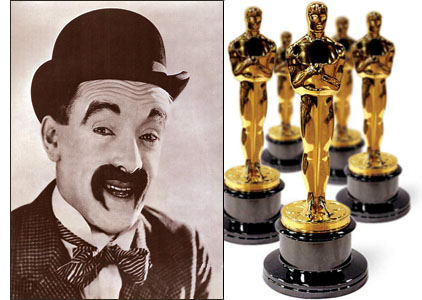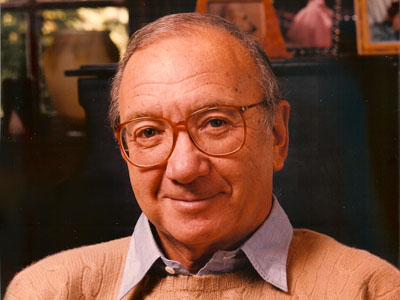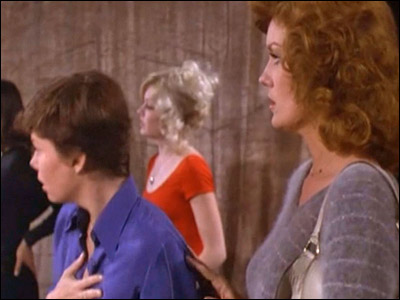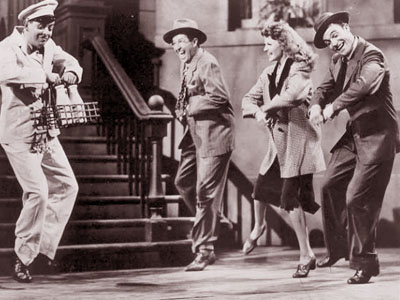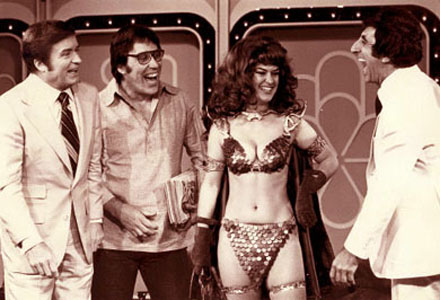Back on 11/29/03, I posted this piece on Castle Films. I still have a box downstairs here full of the Castle Films I bought as a child, plus I have a few dozen other 8mm movies from other companies that followed in Castle's footsteps. I have no projector on which to show these movies but I have the movies and can't bear to part with them…
![]()
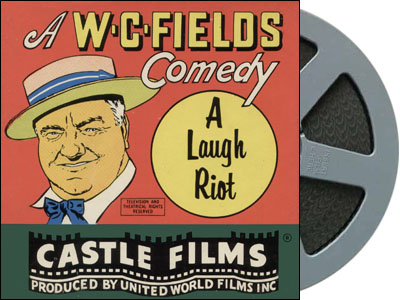
For no visible reason, I found myself thinking about Castle Films this morning…and about how in this age of home video, they seem so primitive. Castle Films was for a time the leading manufacturer of 8mm movies. They were sold in camera shops and in the back of Famous Monsters of Filmland magazine, and a lot of us thought it was the neatest thing to be able to own and show a copy of Dracula or a Woody Woodpecker cartoon at home, even if it was silent and cut down to 4 minutes. That's not quite as bad as it sounds because a few of those old Universal horror films and comedies didn't lose all that much in that format. The one reel, non-talkie version of Abbott and Costello Meet Frankenstein just about encapsulated everything that was fun about that cinema classic.
Castle Films was founded in 1924 by a man named Eugene Castle. This was before 8mm. Castle distributed 16mm movies — mostly newsreels and sports highlights — sold almost exclusively via mail order and in photography shops. There was also a successful business selling prints to film rental companies that would rent them out for non-theatrical exhibition…say, at a school or club function.
In the thirties and early forties, the main Castle product was what were called "soundies," which were short films that were the music videos of the day. In some bars and restaurants, you could put a dime in a machine and view a "soundie" of Glenn Miller's orchestra playing their latest record…or you could buy a Castle Film of it and watch it over and over and over at home. In the post-World War II years, there was a huge uptick in the market for 16mm projectors, so Castle Films sold a lot of "soundies." Around 1947, the company was so successful that Mr. Castle sold it to a company called United World Films.
His timing was great. Soon after, another company stole the rights to the "soundies" away and Castle Films lost its most important item. To fill the void, the new owners made a deal with Universal Studios to release scenes from some of their movie musicals on 16mm and this led to them also putting out excerpts from other Universal movies, most notably Abbott and Costello films, monster movies and the Walter Lantz cartoons (like Woody Woodpecker and Andy Panda) that Universal distributed. They continued to also market newsreels and travelogues and also began releasing films in the 8mm format that was becoming increasingly popular for home movies.
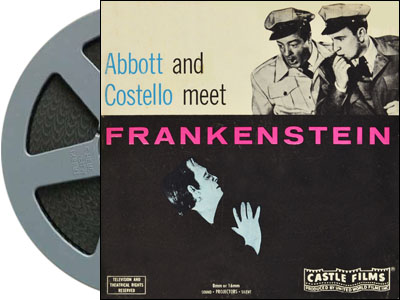
There was a certain artistry in the editing. Most Castle Films came in two versions…a 50-foot reel (3-4 minutes) and a 200-foot reel (12-16). Someone had to take an 85-minute movie and edit the abridged versions, preferably selecting action with a minimum of dialogue. The technology of motion picture production marched in reverse as they made silent films out of talkies, adding in title cards where necessary. The editors for Castle were pretty good about keeping them to a minimum.
Around 1949, Castle Films figured into a notable Hollywood "first." Though their popularity was on a definite decline, Bud Abbott and Lou Costello were still among Universal's highest-grossing stars. Their manager, the legendary Eddie Sherman, had actually secured for them a contract that paid them a percentage of the profits from their films…almost unheard-of at the time. Oddly, though Universal remained eager to put out more Abbott and Costello films, the studio maintained that the films were not breaking even…ergo, no profit checks to Bud and Lou. It was an early example of "Hollywood Accounting," in which the books are juggled so that all sorts of expenses are charged against the film, thereby reducing its net on paper, making it possible for the studio to argue that there are no profits to share.
Sherman knew his boys were being cheated but he was in a chicken-and-egg quandary. He could not get a look at the accounting ledgers unless he sued the studio…and he couldn't find a basis on which to sue the studio if he couldn't see those ledgers. One day, while walking down Vine Street in Hollywood, he passed a camera shop with a window display for Castle Films of Abbott and Costello. That was the excuse he needed. He sued Universal on behalf of his clients and gained access to the books, which displayed all manner of financial irregularity. They wound up settling out of court for a very large sum of cash, but it was probably the movie industry's first dispute of the sort, starting a tradition that continues to this day and now involves DVDs.
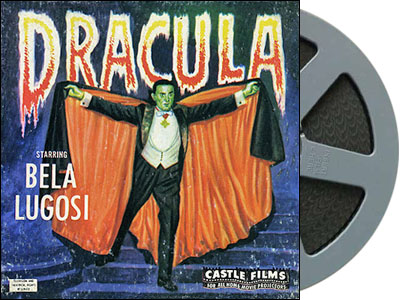
Castle Films dominated the home movie market to such an extent that their name almost became generic. To this day, one sees eBay merchants auctioning off the product of competing films like Blackhawk Films, Atlas Films, Ken Films or Entertainment Films…all referred to as"Castle Films," in much the same way most people refer to any brand of facial tissue as "Kleenex." Throughout the sixties, their top sellers were the films featuring the classic Universal monsters (Frankenstein, Wolfman, Dracula, etc.) and those starring Abbott and Costello. Rumor has it that, no surprise, their all-time best-seller was Abbott and Costello Meet Frankenstein. But the mostly widely-available Castle Film was a 4-minute chop-down of Abbott and Costello Meet the Keystone Kops entitled Have Badge, Will Chase, which was used as a kind of low-cost introductory film to, they hoped, get people hooked on Castle Films. Issued in the hundreds of thousands, it came free with one popular brand of 8mm movie projector and when that deal soured, leftover copies were dumped on the camera store market as loss leaders. At a time when other 4-minute Castle Films cost $6.00, Have Badge, Will Chase went for $1.98 or less. As a result, it was the only Castle Film that some people ever owned.
16mm died out for them in the mid-sixties, which was about when 8mm sales hit their peak. Universal Studios acquired an increasing percentage of the company until eventually they owned it all and renamed it "Universal-8" — or sometimes, "Universal Super-8," as the Super-8mm movie format became more popular. Ironically perhaps, Universal chose to diversify beyond their own catalogue and began licensing the rights to put out movies owned by others. Almost every other major studio also tried establishing an 8mm division but it was too late. The market fell off during the seventies, not just for movies you could show at home but for all 8mm equipment. Even before the Betamax and home video recorders appeared on the scene, most 8mm film companies were defunct. The former Castle Films operation seems to have put out its last items in 1981.
Folks who still own 8mm projectors (an increasingly-scarce device) still sometimes collect Castle Films for the nostalgia. There isn't a lot of point to even threading the Bell and Howell to run a silent excerpt of Dracula when the entire movie, with sound, can be rented at Blockbuster and popped into the VCR. But some of us still hold a fond memory for the days when you could actually run a movie for your friends in the comfort of your own home. At the time, that seemed like a very big deal.
